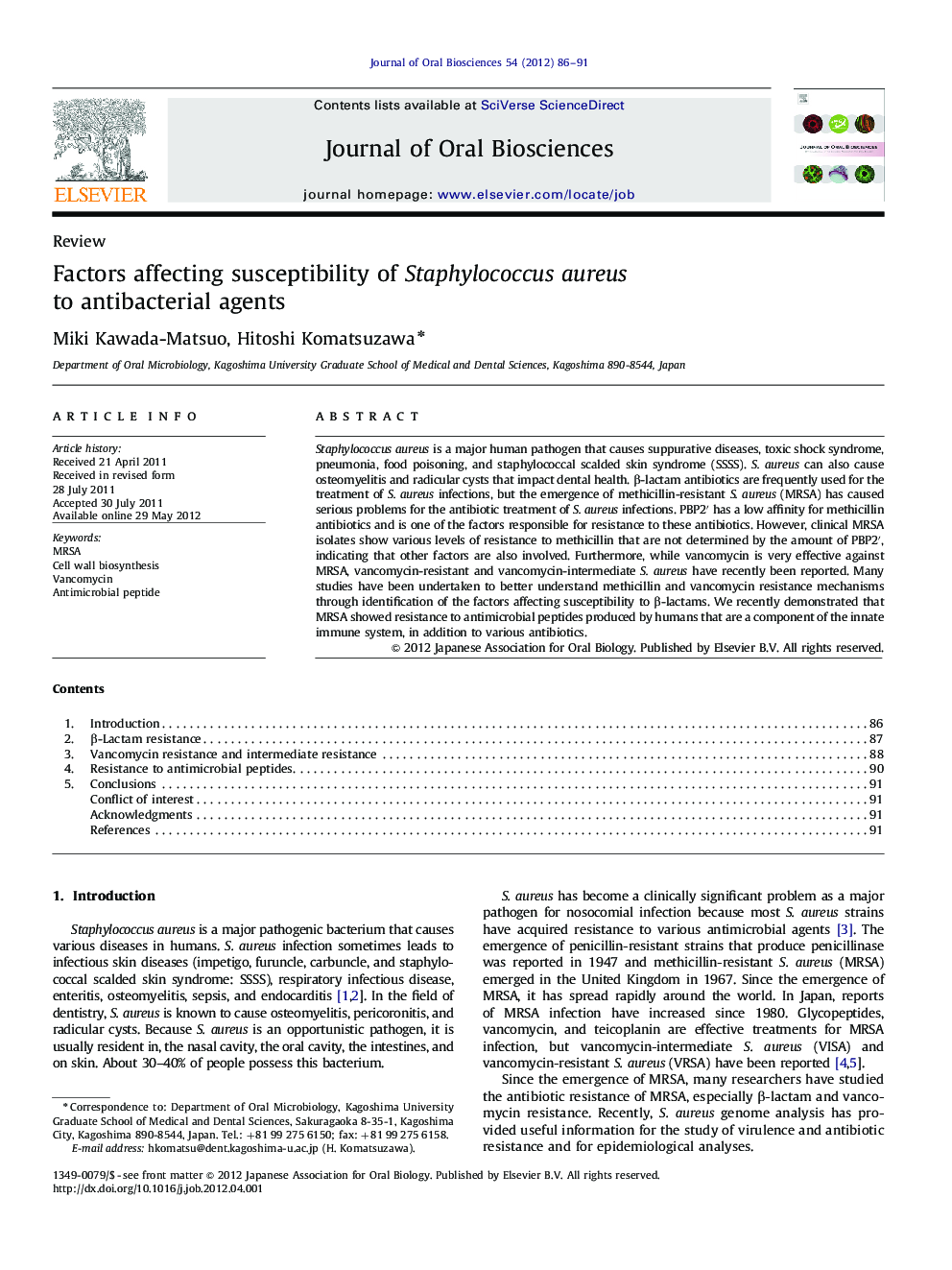| Article ID | Journal | Published Year | Pages | File Type |
|---|---|---|---|---|
| 10163692 | Journal of Oral Biosciences | 2012 | 6 Pages |
Abstract
Staphylococcus aureus is a major human pathogen that causes suppurative diseases, toxic shock syndrome, pneumonia, food poisoning, and staphylococcal scalded skin syndrome (SSSS). S. aureus can also cause osteomyelitis and radicular cysts that impact dental health. β-lactam antibiotics are frequently used for the treatment of S. aureus infections, but the emergence of methicillin-resistant S. aureus (MRSA) has caused serious problems for the antibiotic treatment of S. aureus infections. PBP2â² has a low affinity for methicillin antibiotics and is one of the factors responsible for resistance to these antibiotics. However, clinical MRSA isolates show various levels of resistance to methicillin that are not determined by the amount of PBP2â², indicating that other factors are also involved. Furthermore, while vancomycin is very effective against MRSA, vancomycin-resistant and vancomycin-intermediate S. aureus have recently been reported. Many studies have been undertaken to better understand methicillin and vancomycin resistance mechanisms through identification of the factors affecting susceptibility to β-lactams. We recently demonstrated that MRSA showed resistance to antimicrobial peptides produced by humans that are a component of the innate immune system, in addition to various antibiotics.
Related Topics
Life Sciences
Biochemistry, Genetics and Molecular Biology
Clinical Biochemistry
Authors
Miki Kawada-Matsuo, Hitoshi Komatsuzawa,
